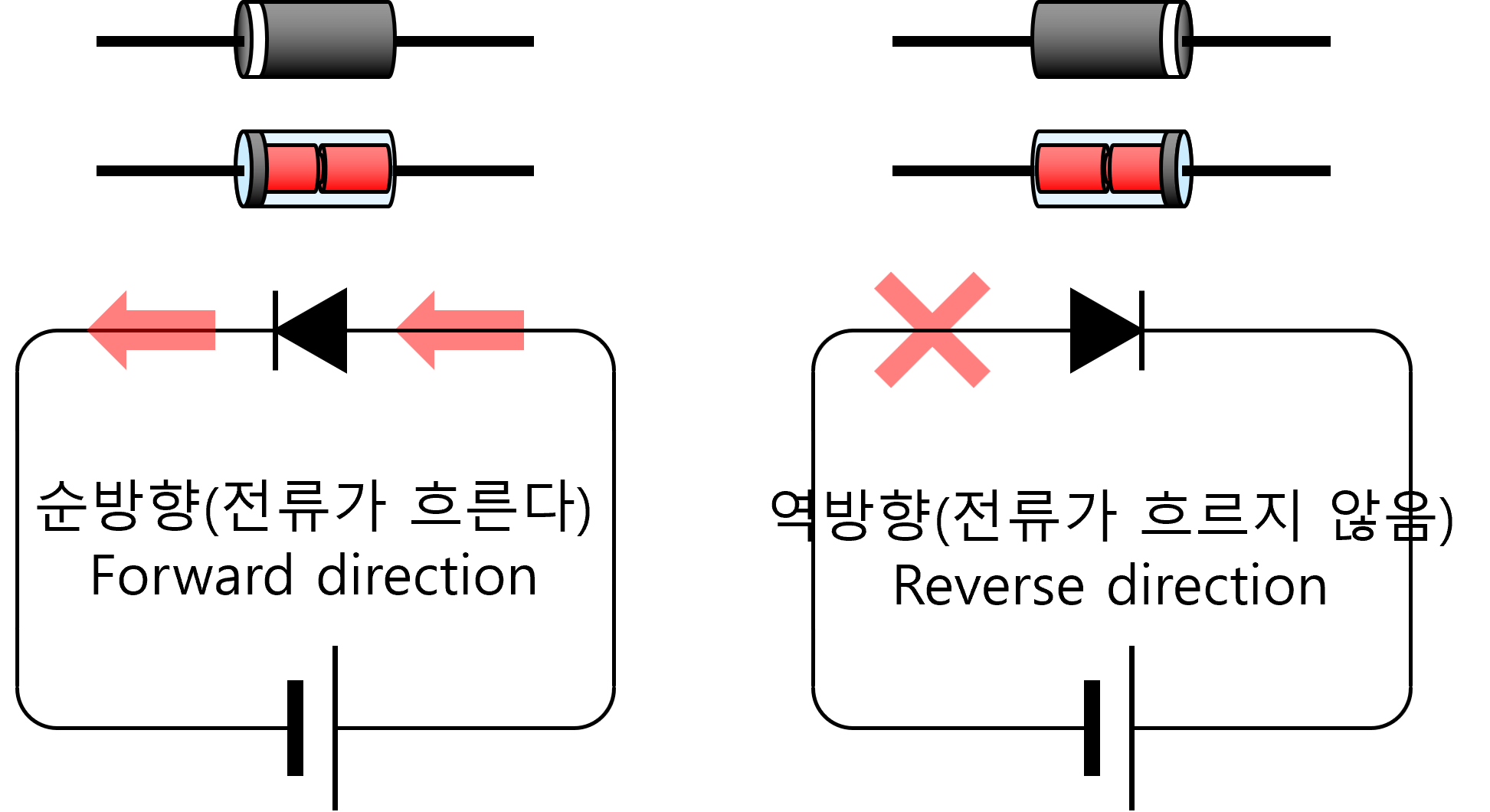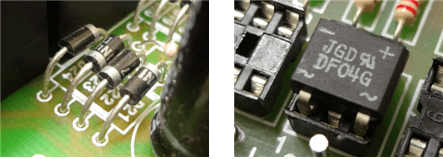Diode
Diodes are electronic components that pass current in only one direction. The direction in which current can flow through the diode is called 'forward,' and the direction in which current cannot flow through the diode is called 'reverse.'
If you compare a diode to a human body, it is similar to blood vessels' valves. The valve prevents blood from flowing backward. Similarly, diodes also prevent current from flowing in unwanted directions.

If you connect as the left side of the above figure, it becomes a forward connection. In the forward connection, the current flows well. On the other hand, if you connect to the right side of the figure, it becomes a reverse connection. When connected in the reverse direction, the diode blocks the flow of current.
The schematic symbol of a diode makes it easy to know which direction the diode is in the forward direction. If you look at the diode, you will see an arrow. The direction of this arrow is 'forward direction.'
Rectifier Circuit and Bridge Diode
The power supply to your home is alternating current (AC). By the way, most home appliances use DC power internally. Therefore, home appliances need to change AC power to DC power internally. In this case, the diode can be used to convert AC power to DC power.
The process of acquiring DC power from AC power is called rectification, and the circuit is called a rectifier circuit. If you see four silicon diodes side by side inside an electronic product, it is a rectifier circuit.

Some electronic components are modules in which four diodes are bundled together to form a rectifier circuit. These diodes are called 'bridge diodes.'

There are two wave patterns (~) on the bridge diode. When AC power is supplied to this place, DC power is output from the places marked with (+) and (-). The wave pattern originates from the waveform of the alternating voltage waveform.